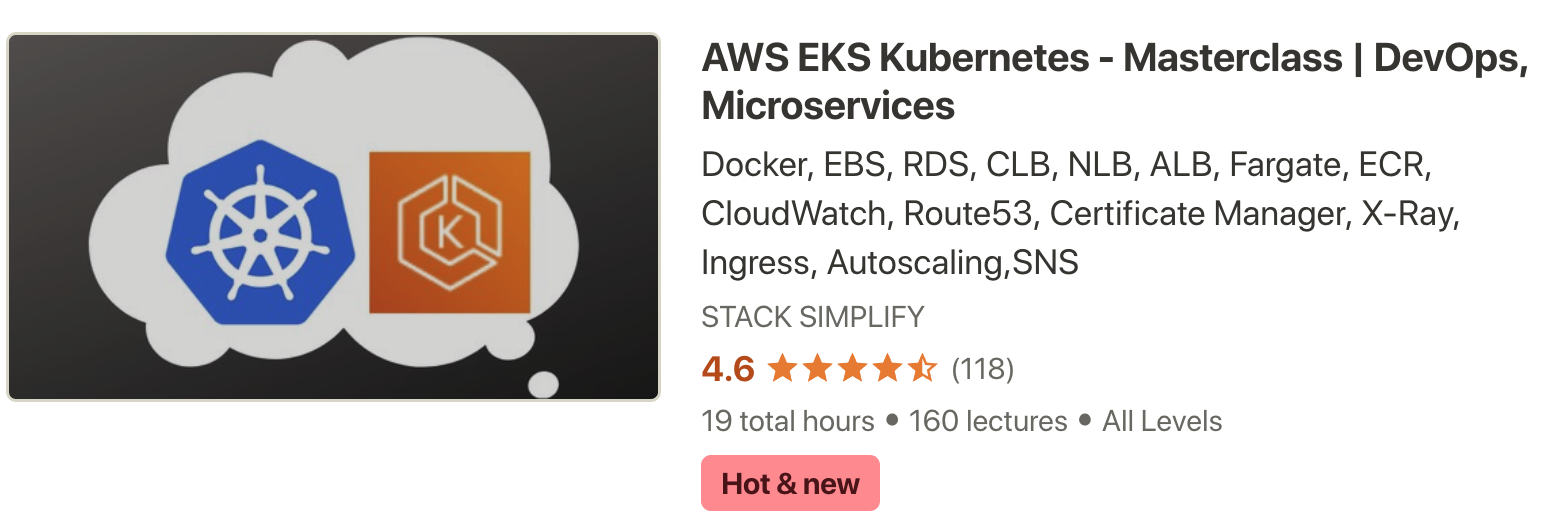EKS - Vertical Pod Autoscaling (VPA)
Step-01: Introduction
- The Kubernetes Vertical Pod Autoscaler automatically adjusts the CPU and memory reservations for your pods to help "right size" your applications.
- This adjustment can improve cluster resource utilization and free up CPU and memory for other pods.
Step-02: Pre-requisite - Metric server
- Metric server should be installed & ready, we have done that as part of HPA
Step-03: Deploy the Vertical Pod Autoscaler (VPA)
# Clone Repo
git clone https://github.com/kubernetes/autoscaler.git
# Navigate to VPA
cd autoscaler/vertical-pod-autoscaler/
# Uninstall VPA (if we are using old one)
./hack/vpa-down.sh
# Install new version of VPA
./hack/vpa-up.sh
# Verify VPA Pods
kubectl get pods -n kube-system
Step-04: Review & Deploy our Application Manifests (Deployment & Service)
- Make a note of resources we have defined
spec.containers.resources.requests.
limits we define in VPA definition
resources:
requests:
cpu: "5m"
memory: "5Mi"
Kubernetes-Manifests
Deploy
# Deploy Application
kubectl apply -f kube-manifests/01-VPA-DemoApplication.yml
# List Pods, Deploy & Service
kubectl get pod,svc,deploy
# Describe Pod
kubectl describe pod <pod-name>
# Access Application (If our NodeGroup is in Public Subnet, if not ignore)
kubectl get nodes -o wide
http://<Worker-Node-Public-IP>:31232
AWS EKS - Elastic Kubernetes Service - Masterclass

Step-05: Create & Deploy VPA manifest
Create VPA Manifest
- Create a VPA manifest for our above Application which we deployed just now.
apiVersion: "autoscaling.k8s.io/v1beta2"
kind: VerticalPodAutoscaler
metadata:
name: kubengix-vpa
spec:
targetRef:
apiVersion: "apps/v1"
kind: Deployment
name: vpa-demo-deployment
resourcePolicy:
containerPolicies:
- containerName: '*'
minAllowed:
cpu: 5m
memory: 5Mi
maxAllowed:
cpu: 1
memory: 500Mi
controlledResources: ["cpu", "memory"]
Deploy VPA Manifest
# Deploy
kubectl apply -f kube-manifests/02-VPA-Manifest.yml
# List VPA
kubectl get vpa
# Describe VPA
kubectl describe vpa kubengix-vpa
Step-06: Generate Load
- Open 3 more new terminals and execute below 3 load generation commands
# Terminal 1 - List and watch pods
kubectl get pods -w
# Terminal 2 - Generate Load
kubectl run --generator=run-pod/v1 apache-bench -i --tty --rm --image=httpd -- ab -n 500000 -c 1000 http://vpa-demo-service-nginx.default.svc.cluster.local/
# Terminal 3 - Generate Load
kubectl run --generator=run-pod/v1 apache-bench2 -i --tty --rm --image=httpd -- ab -n 500000 -c 1000 http://vpa-demo-service-nginx.default.svc.cluster.local/
# Terminal 4 - Generate Load
kubectl run --generator=run-pod/v1 apache-bench3 -i --tty --rm --image=httpd -- ab -n 500000 -c 1000 http://vpa-demo-service-nginx.default.svc.cluster.local/
Step-07: Describe pods which were re-launched by VPA Updater
# List Pods
kubectl get pods
# Describe pods
kubectl describe pod <recently-relaunched-pod>
Step-08: Important Nodes about VPA:
- VPA Updater can re-launch new pod with updated CPU and Memory when you atleast have 2 pods in a deployment.
- If we have only one pod, unless we manually delete that pod, it will not launch new pod with VPA recommended CPU and memory considerign the application availability scenario.
Step-09: Clean-Up
kubectl delete -f kube-manifests/
